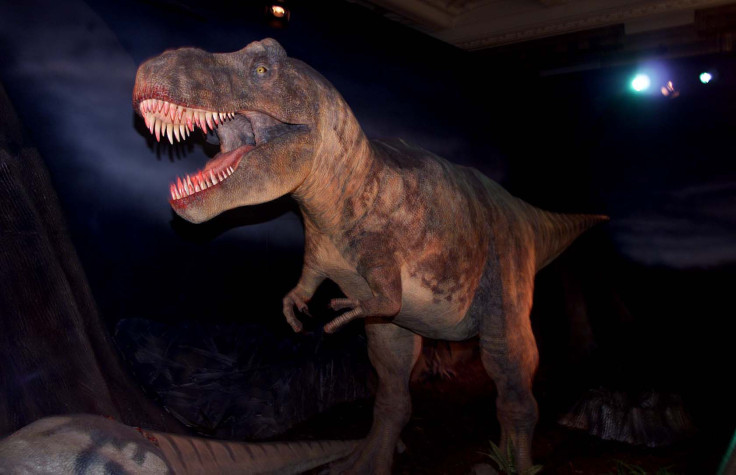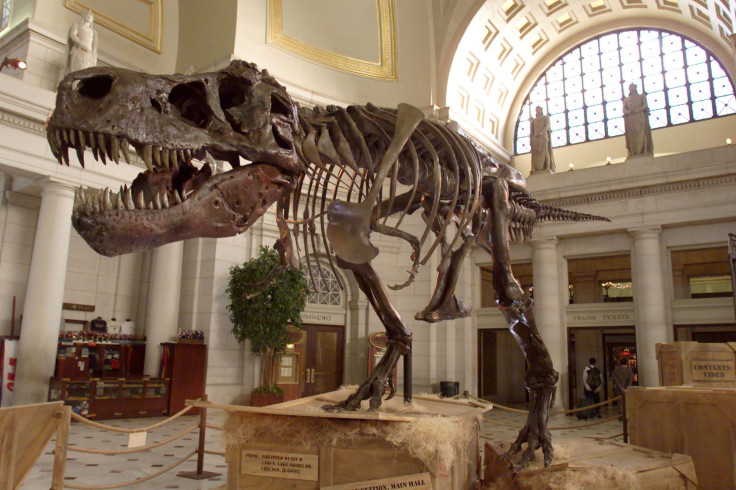Dinosaurs Like Tyrannosaurus Rex Were Gentle Lovers, Engaged In Foreplay Before Sex

Tyrannosaurus rex may have had a gentle side, at least when it came to sexual encounters. The enormous dinosaurs’ snouts, laden with nerve endings, may have been used to nuzzle mates in a dinosaur make out session before sex, according to a study published Thursday in the journal Scientific Reports.
T-rex’s snout was covered with nerve openings known as foramina, making the hard surface as sensitive to touch as a human fingertip. Because of this, they likely would have used their snouts to investigate their surroundings as well.
“In courtship, tyrannosaurids may have rubbed their sensitive faces together as part of pre-copulatory play,” the researchers, led by Thomas Carr of Carthage College in Wisconsin, said in the study.
Similar behavior has been noted in crocodiles and alligators, who rub their faces together before mating.

Like the news that T-rex may have engaged in foreplay, recent discoveries have changed much of what scientists took as gospel regarding dinosaurs, especially when it comes to mating. A study published in July showed that, despite popular depictions of dinosaurs roaring, they also cooed softly much like doves. The quieter sounds were likely used when attracting partners and mating, though they may also have been used to protect territory.
“As in birds, this behavior may have been limited to sexually selected vocal displays,” the researchers said in the study, published in the journal Evolution.
Despite discoveries regarding dinosaurs’ sexual encounters, scientists still have not been able to conclusively differentiate male and female creatures through fossil discoveries. In an analysis in the journal Paleobiology, Jordan Mallon of the Canadian Museum of Nature urged scientists to rely more on concrete evidence like the presence of eggs in a fossil and less on the sizes and shapes of bones to determine sex.
“What we need to do is examine dinosaur specimens that we can positively identify as females, and if you can survey a large enough population of them, you can then say this is what we expect females to look like,” Mallon said. “One can then study the remainder of the population to compare which ones look like the females that we already know, and which ones don’t. Those would be the males.”
© Copyright IBTimes 2024. All rights reserved.





















